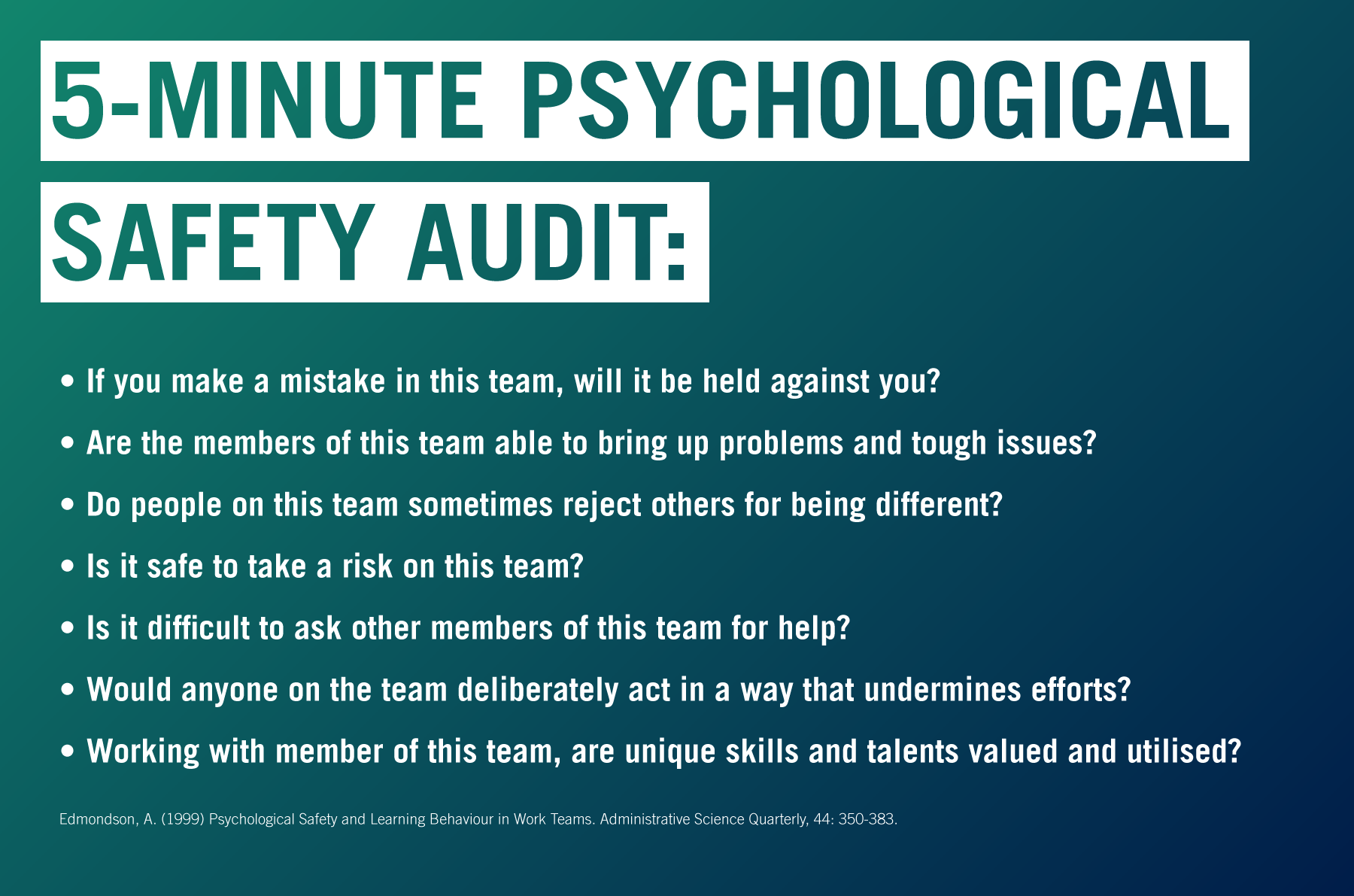Google’s Secret to Creating High Performing Teams? Psychological Safety
Do you work in a team where your colleagues and management take you seriously?
Have you asked a question that you may have framed poorly, or do you get ridiculed for every ‘stupid question? you ask? Does your team positively support you, asking questions to clearly understand you? Do you know that everyone has your back or is there someone that seems to deliberately undermine you?
This is the difference between an environment with a high level of Psychological Safety or one without.
What is psychological safety?
You may not have heard the term before, but you have certainly experienced it within the work environment.
Amy Edmondson, a Harvard Novartis Professor of Leadership and Management, coined the phrase in 1999 as part of her now-renowned research on team success.
She describes it as a ‘shared belief held by members of a team that the team is safe for interpersonal risk-taking.??
In other words this means that the culture supports an environment where team members feel that there is mutual respect, that they are able to speak freely and that they will be supported (especially if they are communicating in a second language), they feel less personal risk (in terms of being shouted down) when it comes to sharing of information and asking for help when needed. That there is an open door policy, so that team members are able to ask for help and collaborate with anyone in order to meet their objectives without the fear of reprisals, outright rejection or office politics. Team members are able to initiate without fear that they will be ridiculed or humiliated regarding their ideas, or if they have made mistakes.
In 2015, Google ran a huge study called Project Aristotle, aimed at identifying factors underpinning high ? performing teams across the business.
There were 5 success factors identified. The surprising outcome was that psychological safety stood head and shoulders above the others as the most significant success factor identified by the groups that underpins the success of High-performance teams.
But is this really that surprising?
Organisations are constantly looking to create a workplace where employees can communicate effectively, collaborate and show initiative.
How can employees do this if they do not feel safe to speak freely, collaborate with others and believe their ideas will be struck down with derision?
Creating an environment where psychological safety is authentic can be complex.
All too often, workplaces are well-intentioned in pursuing effectiveness and miss the opportunity to offer the psychological safety that would support that their original pursuit.
This is particularly evident in an organisation that has high levels of diversity within teams, requiring a higher level of sensitivity around psychological safety. In 2017, The Australian Workplace Psychological Safety Survey found that only 23% of lower income-earning employees felt their workplace was ?psychologically safe?, compared to 45% of worker’s on significantly higher incomes?.
Below are some questions developed by Amy Edmonson in her original research that you can use in your workplace to measure and to gain insights and awareness in terms of your workplace:
What do you think organisations can do to better create a workplace where teams and team members can feel safe to speak up, to collaborate to contribute and innovate?
If you’re looking to improve your team’s effectiveness and create an environment where leadership and team skills can be nurtured, we would love to speak to you about our Team Effectiveness programs. For more information, please contact me on jean@peopleconnexion.com

